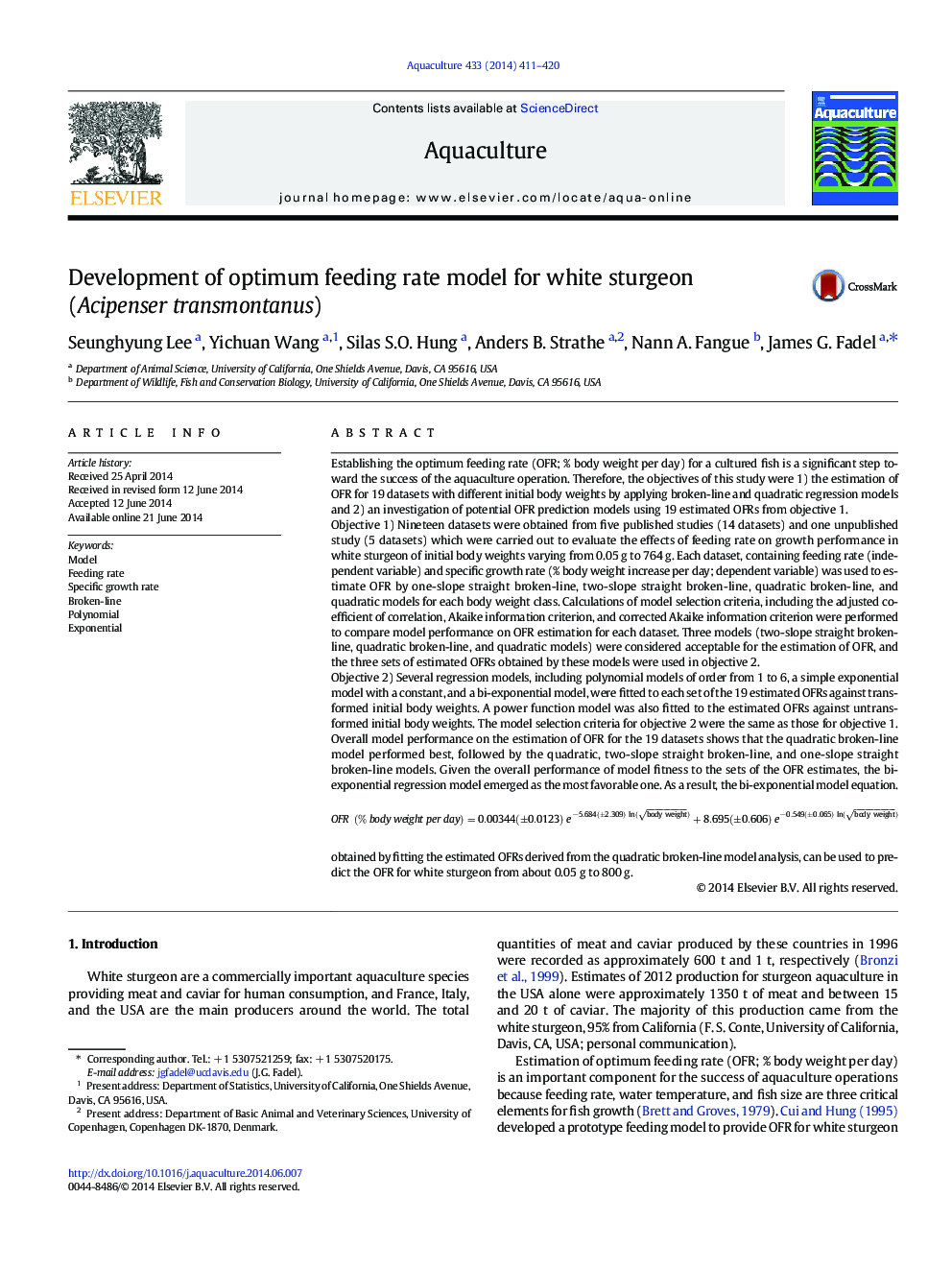| کد مقاله | کد نشریه | سال انتشار | مقاله انگلیسی | نسخه تمام متن |
|---|---|---|---|---|
| 2421890 | 1552854 | 2014 | 10 صفحه PDF | دانلود رایگان |

• An optimum feeding rate (OFR) prediction model for white sturgeon was developed
• A quadratic broken-line model was chosen as the best one for estimation of OFR
• An estimated OFR by this prediction model can provide a maximum growth
• Our modeling approach for development of the OFR model is unique and informative
Establishing the optimum feeding rate (OFR; % body weight per day) for a cultured fish is a significant step toward the success of the aquaculture operation. Therefore, the objectives of this study were 1) the estimation of OFR for 19 datasets with different initial body weights by applying broken-line and quadratic regression models and 2) an investigation of potential OFR prediction models using 19 estimated OFRs from objective 1.Objective 1) Nineteen datasets were obtained from five published studies (14 datasets) and one unpublished study (5 datasets) which were carried out to evaluate the effects of feeding rate on growth performance in white sturgeon of initial body weights varying from 0.05 g to 764 g. Each dataset, containing feeding rate (independent variable) and specific growth rate (% body weight increase per day; dependent variable) was used to estimate OFR by one-slope straight broken-line, two-slope straight broken-line, quadratic broken-line, and quadratic models for each body weight class. Calculations of model selection criteria, including the adjusted coefficient of correlation, Akaike information criterion, and corrected Akaike information criterion were performed to compare model performance on OFR estimation for each dataset. Three models (two-slope straight broken-line, quadratic broken-line, and quadratic models) were considered acceptable for the estimation of OFR, and the three sets of estimated OFRs obtained by these models were used in objective 2.Objective 2) Several regression models, including polynomial models of order from 1 to 6, a simple exponential model with a constant, and a bi-exponential model, were fitted to each set of the 19 estimated OFRs against transformed initial body weights. A power function model was also fitted to the estimated OFRs against untransformed initial body weights. The model selection criteria for objective 2 were the same as those for objective 1.Overall model performance on the estimation of OFR for the 19 datasets shows that the quadratic broken-line model performed best, followed by the quadratic, two-slope straight broken-line, and one-slope straight broken-line models. Given the overall performance of model fitness to the sets of the OFR estimates, the bi-exponential regression model emerged as the most favorable one. As a result, the bi-exponential model equation.OFR%bodyweightperday=0.00344±0.0123e−5.684±2.309ln(bodyweight)+8.695±0.606e−0.549±0.065ln(bodyweight)obtained by fitting the estimated OFRs derived from the quadratic broken-line model analysis, can be used to predict the OFR for white sturgeon from about 0.05 g to 800 g.
Journal: Aquaculture - Volume 433, 20 September 2014, Pages 411–420